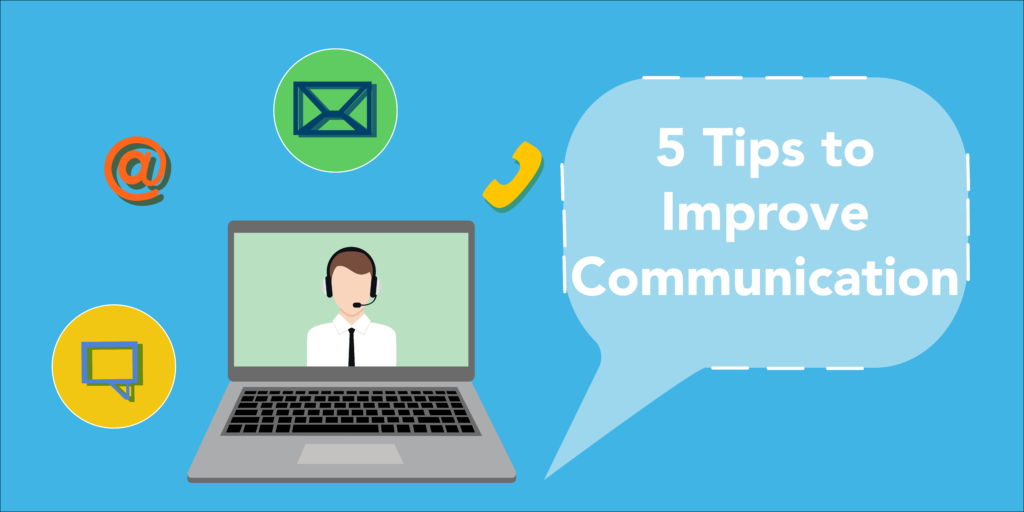
Recent studies show that 3.3 million full-time professionals, excluding volunteers and the self-employed, consider their home as their primary place of work (Global Workplace Analytics, April 2016). The U. S. Bureau of Labor Statistics reported that in 2015, 24% of employed people did some or all of their work at home.
Working from home is great. Because DemandGen is largely a virtual company, I’ve been working remotely for seven years, and find myself to be much more productive, organized, and motivated than I was when I worked in an office environment.
I like to think of myself as a good communicator, and being part of a virtual company means that I have to pay close attention to how I am communicating with both my colleagues and clients. As a Client Engagement Manager, my responsibility is to establish and maintain a consultative and trusted partnership with our clients, and of course one of the main facets of that consultative partnership is communication. So, one very important facet of my job is effectively leading discussions in a virtual environment (the key word being effectively).
My DemandGen colleagues and I are sitting around the “virtual table” with our clients every day, learning more about our clients’ business needs, getting details around business processes, gathering requirements for projects, and – very importantly — setting expectations. Sometimes you’re talking to one person, but sometimes a dozen people can be on the other end – and sometimes those people are all in different places. Over time you develop special skills for this situation, and I’ve gotten pretty good at it by experimenting with different techniques – and most importantly, repetition!
Whatever side of the virtual table you’re on, here are five tactics I’ve found extremely effective in helping virtual discussions go more smoothly.
#1. Ask questions.
The #1 cause of dissatisfaction in a consultative partnership is not meeting expectations. And blurred expectations come from miscommunications. That’s why it’s crucial to ask questions to ensure you are communicating effectively in both directions.
Don’t hesitate to ask questions — especially the hard ones. As the “shepherd” of the conversation, you’re often not also expected to be a subject matter expert, so you can more easily be the one to ask for clarification. Maybe there is a question that everyone is hesitating to ask, either from fear of appearing ignorant or because it’s tricky to answer. When I play the ignorant role and ask for things to be broken down into layman’s terms, so often other people then speak up and say “Oh, I thought you meant. . .” So we’ve nipped misunderstanding in the bud. When somebody uses a broad term, go a level deeper to get more context. Not sure what Mr. Director of Sales specifically means when he says “we need to show results”? Dig in and ask him to provide more detail.
#2. Listen for and provide verbal cues.
This technique is one I use every day when I’m leading calls with my DemandGen technical colleagues and clients. These meetings are very collaborative in nature, but because we’re not all sitting around a conference table, I don’t have the same ability to glance at someone or give them a nudge to warn them that they will need to speak up – and it’s not easy to be put on the spot. So, when a client is saying something or asking a question, I may jump in for a few seconds to give an initial response, with the main purpose of cuing my colleague to be ready. It can be easy as remarking, “I’ll let Tom chime in on this one, but my thinking is. . .” in order to give a colleague a heads-up that you’re expecting them to provide feedback and contribute to the conversation at that moment in time.
Listening for verbal cues from others is also really helpful in maintaining effective communication. I try to listen to the general tone of the (virtual) room. “Uh-huh” and similar verbalizations are positive cues that acknowledge that you are making sense; you can keep going with this thought and your listeners are on the same page with you. If you’re hearing someone saying “well. . .” or “um. . .,” they’re trying to stop you because something is not working for them. Instead of continuing to talk over them, stop and hear them out. Sometimes they’ll say “never mind, go on,” and at the end, they realize their question was answered. Sometimes you find that they have other information you didn’t know about. Sometimes they are confused and a simple clarification is all that is needed. Other times, of course, they disagree! At those times you may need to redirect (see #4).
#3. Repeat what you’ve heard (AKA active listening).
The art of active listening is not a new concept, but a reminder may be helpful. Throughout your meeting, repeat what you’ve heard. In our business, we’ve got a lot of information flying around all the time, new buzz words coming into play, and multiple possible meanings for the same terms. In a conference call, with multiple voices giving input, it’s particularly easy to mishear someone. Repeating what you’ve heard allows your audience to correct you when needed, and helps avoid misunderstandings and missed details.
Don’t make assumptions when someone is unclear in a description or explanation of something. “What I heard Joe say earlier was. . .” or “Just to be clear, what you meant when you said. . .” are common phrases I will use when I want to clarify and double-check what was said.
#4. Redirect when needed.
Every meeting needs a person who can step in when the conversation starts to go sideways. There’s a fine line between getting enough detail and going in too deep. Be the person that keeps things on track and focused on the topic at hand.
When your meeting starts to spiral down a rabbit hole, it’s vital to the effectiveness of your meeting to be a little forceful. A handy phrase is “Let’s remind ourselves of what the main topic is for today.” Another one – and I would be very rich if I had a nickel for every time I heard it – is “Let’s take that offline.” Some people hate that kind of jargon! But the truth is, it has its place: it’s a brief but polite way to say “You have a totally valid point, but it’s not something we should talk about right now.”
Ultimately, it’s an art and not a science as to when to let a conversation go its way and when to pull it back. The easiest way to learn is by observing colleagues who are very skilled at it.
#5. Use visuals (even offline ones).
How many times have you been on a call where someone is referring to something, a user interface, a report, a document, and you can’t exactly picture what they are talking about? What they are saying doesn’t quite click because you can’t see it in your mind. Another common issue is for someone to say, “Remember in the document where we said ABC?” and someone else says “I thought we said DEF,” and someone else says “I don’t remember that issue being covered in that document.” If you have nothing in front of you to refer to, that’s a great way to have a meeting degenerate into a free-for-all!
When screen sharing, have an example or the actual document on hand and ready to show on the screen if it makes sense to do so. Providing that contextual backdrop to the conversation will allow your audience to see what you’re referring to and hopefully help ideas make sense to them. Another helpful approach when screen sharing is to take notes of the discussion right on the screen (when it’s appropriate to do so, of course), as a virtual whiteboard. So many times the attendees are wordsmithing as I’m typing, and by the end of the call, we have a written list of items that everyone has agreed upon.
Phone-only meetings are a bit less convenient, but you can still send relevant documents via email ahead of time, or even while you’re talking if it’s feasible; I’ve often found that doing so is well worth a few seconds of delay.
Make the most of every virtual meeting
Try applying these tips to your next important conversation that needs collaboration and synergy when you are in front of the computer screen, or on the phone, and not at the conference table. Leading virtual discussions is a very valuable soft skill that will only become more important as the MarTech landscape moves further toward remote operations. You don’t need to be the subject matter expert to contribute value and make meetings successful.

As a Senior Account Director, Ron Scrafano helps DemandGen clients adopt and optimize marketing technologies across their organizations. Ron was an early pioneer in the Marketing Automation industry starting in 2007 when he became an Eloqua certified expert and began to enable success for hundreds of B2C and B2B organizations.
The post The Art of Leading a Virtual Discussion: 5 Tips to Improve Communication appeared first on DemandGen.























